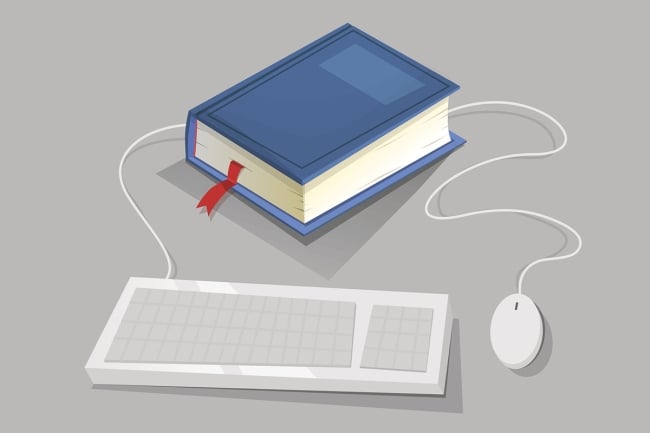You have /5 articles left.
Sign up for a free account or log in.

More universities are replacing computer-literacy requirements with a broader digital- or media-literacy focus.
Getty Images
Universities spent the late 1990s and early 2000s ensuring students could attach documents to email, fill out spreadsheets and perform other basic computer skills.
But the information age has led to a changing of the guard, with a new focus on digital or media literacy for incoming students.
“As we looked toward the needs of students, we found there’s a lot of information out there and students may not know how to discern what’s accurate information, what sources are reliable and how to ethically engage with the information coming [their] way,” said Lynn Hogan, Florida State University’s associate provost and director of critical thinking initiatives.
Since last year, Florida State has required incoming students to complete a digital-literacy course even as it phases out the familiar computer competency requirement.
FSU joins a small but growing number of institutions adding the requirement. While most of the institutions call the requirement digital literacy, it is closer to what has often been termed media literacy with a focus on understanding and identifying accurate online news sources, misinformation, opinion and advertising.
The ongoing influence of social media, concerns about deliberately false news stories and the rise of artificial intelligence has added urgency to the effort.
“People in general tend to believe what they see on the internet and you have to be able discern what is a credible source and what isn’t,” said Lisa Hunt, dean of administrative services at Southcentral Kentucky Community and Technical College. “And now with AI, they definitely need to be able to look for signs that may or may not be true.”
The current state of digital literacy is “abysmal,” said Tony Liao, coordinator of University of Houston’s digital media undergraduate program.
In a 2019 study conducted by the Stanford History Education Group (now called Digital Inquiry Group), almost every high school student was unable to differentiate between valid and fake news articles; its 2016 study had similar results.
“I don’t expect in the intervening four years that somehow the population has improved in that regard,” Liao said.
The structure of a new digital-literacy requirement depends on the institution. For FSU, the requirement is dependent upon a major—for example, a digital-literacy requirement for a journalism major would require different courses than a biology major.
This is for all the students, all the majors and it’s going to be a challenge of what it means to be human when you share a planet with intelligent machines.
Mark Hagerott
Kentucky Community College System, which has required digital literacy since the early 2000s, has a dedicated rubric. If a course fits within the rubric, it can count toward the digital-literacy requirement.
“As it’s morphed over the years, the definition has changed to include ethical use and talking about AI,” Hunt said. “But there’s still components of teaching student aspects of technology. They may know how to use their phone, but when you talk about sending a professional email, they’re lost.”
Beyond understanding news and information on digital devices, some courses include learning about the underlying technology and coding. That’s the case for the North Dakota University system, which decided last June to require digital literacy and is expected to implement it for incoming students this fall.
The system will offer several tracks to complete the requirement, including standalone digital literacy courses, existing courses with integrated digital literacy and self-paced modules, according to North Dakota University System Chancellor Mark Hagerott.
“This is for all the students, all the majors and it’s going to be a challenge of what it means to be human when you share a planet with intelligent machines,” Hagerott said.
The North Dakota university system discussed digital literacy in 2018 but it was tabled until planning slated for 2024. Then, after OpenAI released ChatGPT in November 2022, university trustees saw the topic as too important to wait.
In addition to the new requirements, several institutions have digital-literacy courses, and a few created majors for the topic. Arizona State University offers a digital-media literacy undergraduate degree, while Indiana Wesleyan University has a master’s degree in technology and digital literacy in education.
There are also programs such as the News Literacy Project’s Checkology, a free media-literacy program used in middle schools, high schools and colleges that educates about media bias, misinformation and conspiratorial thinking.
Universities do face challenges implementing digital-literacy courses, including finding professionals well-versed in the fast-changing subject while students often consider themselves to be experts. There is also the potential downside of having another graduation requirement.
While literacy courses do improve literacy, such courses are not a perfect fix, Liao said. “A single class on digital literacy doesn’t necessarily make you literate.”









